Condominium living offers a unique blend of homeownership and shared responsibility. A critical part of that shared responsibility is understanding the insurance coverage that protects both individual unit owners and the condominium association as a whole. This guide will help you navigate the complexities of condominium insurance in Texas.
Types of Condominium Insurance Coverage
Master Policy (Condominium Association Insurance)
The master policy is the backbone of a condominium’s insurance protection. It’s purchased and maintained by the condominium association to cover the building’s common elements and shared spaces. This typically includes:
- Exterior Structure: Walls, roofs, foundations, siding, windows, and doors of the building.
- Common Areas: Hallways, lobbies, elevators, stairwells, and any shared amenities like swimming pools, gyms, or clubhouses.
- Common Systems: Electrical wiring, plumbing, heating, ventilation, and air conditioning systems that serve the entire building.
- Liability Coverage: Protects the association and its board members from legal claims arising from injuries or property damage that occur in common areas.
The extent of interior coverage for individual units can vary depending on the type of master policy:
Bare Walls Coverage
This basic type only covers the structural elements of the unit, like walls, floors, and ceilings. Unit owners are responsible for insuring everything inside the unit, including fixtures, appliances, and personal belongings.
All-In Coverage
This more comprehensive type covers not only the structural elements but also fixtures, appliances, and even some upgrades or improvements made by the unit owner. It provides broader protection but usually comes with higher premiums for the association.
Individual Unit Owner Policy (HO-6 Policy)
An HO-6 policy, also known as condo insurance, is essential for individual unit owners to fill the gaps in coverage left by the master policy. This policy typically covers:
- Personal Belongings: Furniture, clothing, electronics, appliances, and other personal items within the unit are protected against theft, fire, vandalism, and other covered perils.
- Interior Finishes: Wall coverings, floor coverings, cabinets, countertops, and other finishes are usually covered, especially if the master policy provides only bare walls coverage.
- Improvements and Betterments: Any upgrades or renovations made by the unit owner, such as new flooring, kitchen remodeling, or bathroom fixtures, are typically covered.
- Loss Assessment Coverage: Provides financial protection if the association levies a special assessment on unit owners to cover a major loss or repair that exceeds the master policy’s limits.
- Additional Living Expenses: If your unit becomes uninhabitable due to a covered loss, this coverage can help pay for temporary living expenses like hotel stays, meals, and transportation.
- Liability Coverage: Protects the unit owner from legal claims arising from injuries or property damage that occur within their unit or caused by their negligence.
Important Considerations
Review Both Policies. It’s crucial for unit owners to carefully review both the master policy and their individual HO-6 policy to understand what’s covered and any exclusions.
Be aware of potential gaps in coverage, such as flood or earthquake damage, which may require additional insurance.
Understand the deductibles and policy limits for both policies to ensure adequate protection.
Key Considerations for Texas Condominium Owners
Understand which type of coverage your association needs — or already has.
Deductibles and Assessments
Master policies often have high deductibles. In the event of a claim, the association may pass a portion of the deductible onto unit owners through an assessment. Be aware of this potential cost.
Liability Coverage
Ensure your individual policy includes adequate liability coverage to protect you from claims arising from accidents within your unit.
Review the Governing Documents
Your condominium association’s governing documents will detail the insurance requirements for both the association and unit owners. Review these documents carefully to understand your responsibilities.
Legal Requirements and Best Practices
Texas law mandates that condominium associations maintain certain insurance coverage, typically outlined in the Texas Uniform Condominium Act.
Lenders may also require specific insurance coverage for financed units.
It’s advisable for associations to review their insurance coverage annually to ensure it aligns with current needs and potential risks.
Condominium Law Experts Are Here to Help | Manning and Meyers
At Manning and Meyers, our experienced condominium law attorneys can help you navigate the complexities of condominium insurance. Whether you’re a homeowner seeking clarity on coverage or an association board member looking to update your master policy, we offer comprehensive legal guidance.
We can assist with:
- Reviewing and interpreting governing documents
- Negotiating with insurance providers
- Resolving disputes related to insurance coverage
- Advising on liability issues
Don’t leave your condominium insurance to chance. Contact Manning and Meyers today for expert legal advice tailored to your specific needs.


